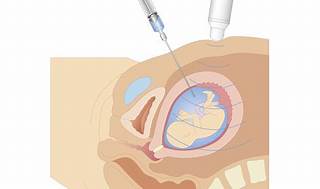A nurse is planning teaching for a client and their family about home oxygen therapy. Which of the following information should the nurse plan to include in the teaching?
Use synthetic fabrics for the client’s bedding
Apply petroleum jelly to soothe the mucous membranes
Clean the equipment with an alcohol-based cleaning product
Avoid using nail polish remover around the client
The Correct Answer is D
The correct answer is choice D. Avoid using nail polish remover around the client. Nail polish remover contains acetone, which is a flammable substance that can ignite in the presence of oxygen.
Using nail polish remover around the client can increase the risk of fire and burn injuries.
Choice A is wrong because synthetic fabrics can generate static electricity, which can also cause sparks and ignite oxygen.
The client’s bedding should be made of cotton or wool, which are natural fabrics that do not produce static electricity.
Choice B is wrong because petroleum jelly is a petroleum-based product that can react with oxygen and cause skin irritation or burns.
The client should use water-based moisturizers to soothe the mucous membranes.
Choice C is wrong because alcohol-based cleaning products are also flammable and can cause fires or explosions when exposed to oxygen.
The client should use mild soap and water to clean the equipment, and follow the manufacturer’s instructions for maintenance.
Some general safety tips for home oxygen therapy are:
- Keep away from heat and flame, such as candles, matches, lighters, stoves, fireplaces, etc.
- Do not smoke or allow others to smoke near the oxygen source
- Do not use aerosols, vapor rubs, oils, or other products that contain flammable substances near the oxygen source
- Store oxygen tanks or cylinders in a well-ventilated area away from direct sunlight and heat sources
- Secure oxygen tanks or cylinders to prevent them from falling or rolling
- Use the exact rate of oxygen prescribed by the doctor for each activity
- Check the oxygen gauge or level regularly and call the medical supply company when it is low
- Use a humidifier bottle if prescribed by the doctor to prevent dryness of the mucous membranes
- Change the nasal cannula, mask, and tubing as instructed by the medical supply company to prevent
Nursing Test Bank
Naxlex Comprehensive Predictor Exams
Related Questions
Correct Answer is B
Explanation
The correct answer is B.
Previous violent behavior. According to the web search results, this is the best predictor of future violence among the given risk factors.
Other risk factors include past history of aggression, poor impulse control, and violence. Comorbidity that leads to acts of violence (psychotic delusions, command hallucinations, violent angry reactions with cognitive disorders).
Choice A is wrong because a history of being in prison is not a direct cause of violence, but rather a possible consequence of it.
Choice C is wrong because male gender is not a sufficient factor to predict violence, as there are many other variables involved. Choice D is wrong because experiencing delusions is not necessarily associated with violence, unless they are of a paranoid or persecutory nature.
Normal ranges for violence risk assessment are not standardized, but some tools that can be used include the Historical Clinical Risk Management-20 (HCR-20), the Violence Risk Appraisal Guide (VRAG), and the Psychopathy Checklist-Revised (PCL-R). These tools use different scales and criteria to evaluate the likelihood of violent behavior in individuals.
Correct Answer is C
Explanation

Explore
The correct answer is choice c. Contractions.
Choice A rationale:
Epigastric pain is not a common complication following an amniocentesis. It is more often associated with conditions like preeclampsia or gastrointestinal issues.
Choice B rationale:
Hypertension is not directly related to amniocentesis. It is more commonly associated with conditions like preeclampsia or chronic hypertension in pregnancy.
Choice C rationale:
Contractions are a significant complication to monitor for after an amniocentesis, especially at 33 weeks of gestation. The procedure can sometimes induce preterm labor.
Choice D rationale:
Vomiting is not a typical complication following an amniocentesis. It may occur due to other unrelated reasons but is not directly linked to the procedure.
Whether you are a student looking to ace your exams or a practicing nurse seeking to enhance your expertise , our nursing education contents will empower you with the confidence and competence to make a difference in the lives of patients and become a respected leader in the healthcare field.
Visit Naxlex, invest in your future and unlock endless possibilities with our unparalleled nursing education contents today
Report Wrong Answer on the Current Question
Do you disagree with the answer? If yes, what is your expected answer? Explain.
Kindly be descriptive with the issue you are facing.
